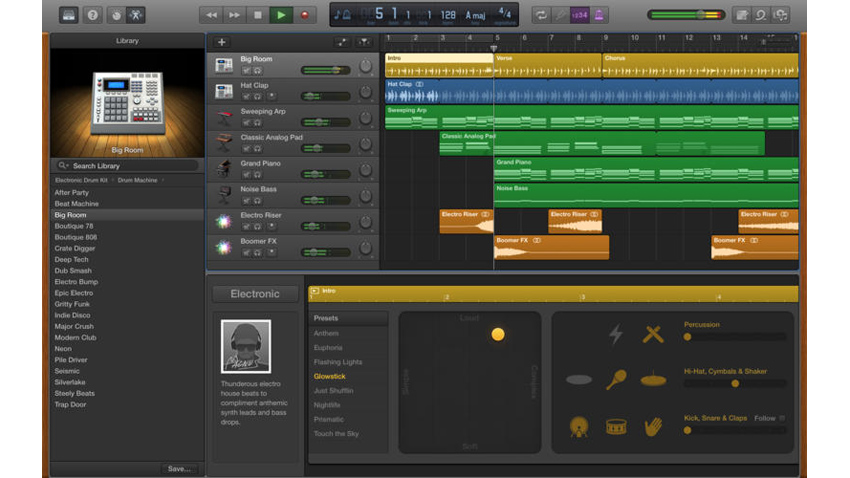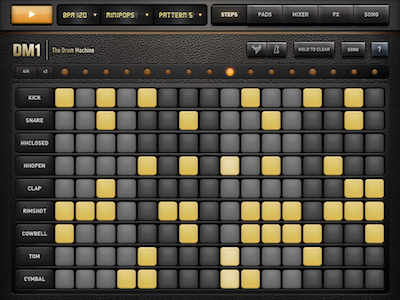How To Assign Sounds to MIDI Keyboard in Garageband? I used to think that it wasn’t possible to assign samples to individual keys in Garageband, however, it’s very capable of this feature, in fact, you can check out the video for yourself below to see a step-by-step tutorial on how to do it. While we can increase the quality of Garageband’s piano sounds using EQ, compression, reverb, and ambiance, the best way to get a superior piano is to simply download another plug-in that sounds way better right out of the box. The best free piano sounds for Garageband are the 4Front piano and the Soft Piano from Spitfire Audio Labs.
Apple's GarageBand contains scores of great software instruments and hundreds of audio loops. What it doesn't have is a sampler'a way for you to create your own instruments from audio files. Since GarageBand lets you use Audio Unit instruments, you can make use of samplers like Native Instruments Kontakt from within GarageBand. But, there's an easy way to make a simple sampled instrument without resorting to a third-party tool.
A perfect application for this is to create a 'sound effect' instrument. This is an instrument where each key contains a related sound effect. For example, you might create an instrument comprised of different types of footsteps or doorbell rings. Now, when you are adding sound effects to a movie, you can play and record keys on your keyboard rather than having to drag audio files into your song.
Garageband Mac Piano Sounds
Creating the Sampled Instrument
To start with, you need to create a software instrument track. Change it from the default 'Grand Piano' sound to 'Radio Sounds' under the 'Sound Effects' category. Then, bring up the musical typing keyboard from the Window menu (or use the shortcut Shift-Command-K).
You'll notice that the musical keyboard looks a little different than it does with most instruments. There are tiny speaker icons on the white and black keys. And, there is a 'Details' section below the keyboard. You can click the triangle next to the word 'Details' to reveal a list of the sounds mapped to each key.
Now for the fun part. Take any audio file from your disk (WAV, AIFF, MP3, and M4a files all work) and drag it over one of the white or black keys. The cursor will turn into a plus sign. When you let go of the mouse, the new audio file will now be assigned to that letter.

In the picture below, I am dragging the audio file 'DoorBellRing1980s.wav' to the 'A' key'a C note on the musical typing keyboard:

That's it! Press the letter on your keyboard or the associated key on your MIDI keyboard and you will hear your audio file played back. Assign other audio to other letters on your keyboard. You can even use the 'Z' and 'X' keys to move up and down the musical keyboard and assign new sounds to each group of 18 keys. In fact, you can assign a different audio file to every note from C-2 to F8!
Unfortunately, you can only drag one audio file out at a time, so it's tedious work. But, when you're done, you will have a new instrument that works like any other software instrument in GarageBand. You can record a part and play it back on a software instrument track. You can use the 'Save Instrument' button to save your new instrument and use it in other songs.
You can use this technique for more than 'sound effect' instruments. For example, you could record some sounds of your own (guitar chords, percussion hits, hand claps, mouth noises) and use those sounds to build a custom instrument. Just record the sounds in GarageBand, create a new Sound Effects software instrument as outlined above, and drag the audio files from the timeline to the musical typing window for the Sound Effects instrument.
Clearly, this technique is not the one to use for that thousand sample grand piano you want to create. There's no velocity sensitivity (you can't play back different sounds based on how hard you press a key) and there's nothing like scripting, round robin, or other features you find in a real sampler like Kontakt. But, for a sound effect instrument or even a simple musical instrument, this technique works perfectly.

As you can see there's more to GarageBand than meets the eye! Go deeper into GarageBand '11 here.

Reader Skip Edwards seeks an additional way to tinkle in GarageBand. He writes:

I have a little toy piano that I would like to sample and use in GarageBand, but I have no idea where to start and what software to use. Is there a (simple and cheap) way to sample this instrument and then use it as a software instrument sound in GarageBand?
Yes. This can be done for free if you have a microphone that works with your Mac.
You’d use that microphone in league with a recording application such as the free and open-source Audacity to record each note of your toy piano. I don’t want to turn this into a tutorial on how to record audio, so here’s the gist. Create a new file, place your microphone in a position where it can capture the best your piano has to offer, start recording, and plunk out a note on the instrument, letting it ring for as long as it sounds natural (which, for a toy piano, shouldn’t be too long). Name the sample (TP C3, for example) and save the file in the AIFF or WAV format. Create a new file for each note you eventually want to play in GarageBand.
Launch GarageBand and choose a new Piano project. In the resulting window, select the Grand Piano track and press Command-I to produce the Info pane. In the first Browse column select Sound Effects. In the Instrument column to the right, select Radio Sounds. Now choose Window -> Musical Typing. Locate the samples you recorded of your toy piano and drag them into position on the Musical Typing keyboard—for example, drag the Middle C sample to the correct position on the Musical Typing keyboard. If you have more samples than will fit on the keyboard, choose a lower or higher octave from the keyboard at the top of the window and drag in your samples.
Garageband Piano Sounds Youtube
Once you’ve loaded all your samples, click the Save Instrument button at the bottom of the window. You’ll be prompted for a name for your instrument. Enter it and click Save. That instrument will now appear in the Instrument column when you select Sound Effects in the Info pane. Like other software instruments it can be played with both GarageBand’s virtual keyboard and an external musical keyboard.
Garageband Ios Piano Sounds
If you’d like more control over your samples, check our SonicAmigo’s $35 PolyPhontics GB. With it you can tweak your samples to a far greater extent.